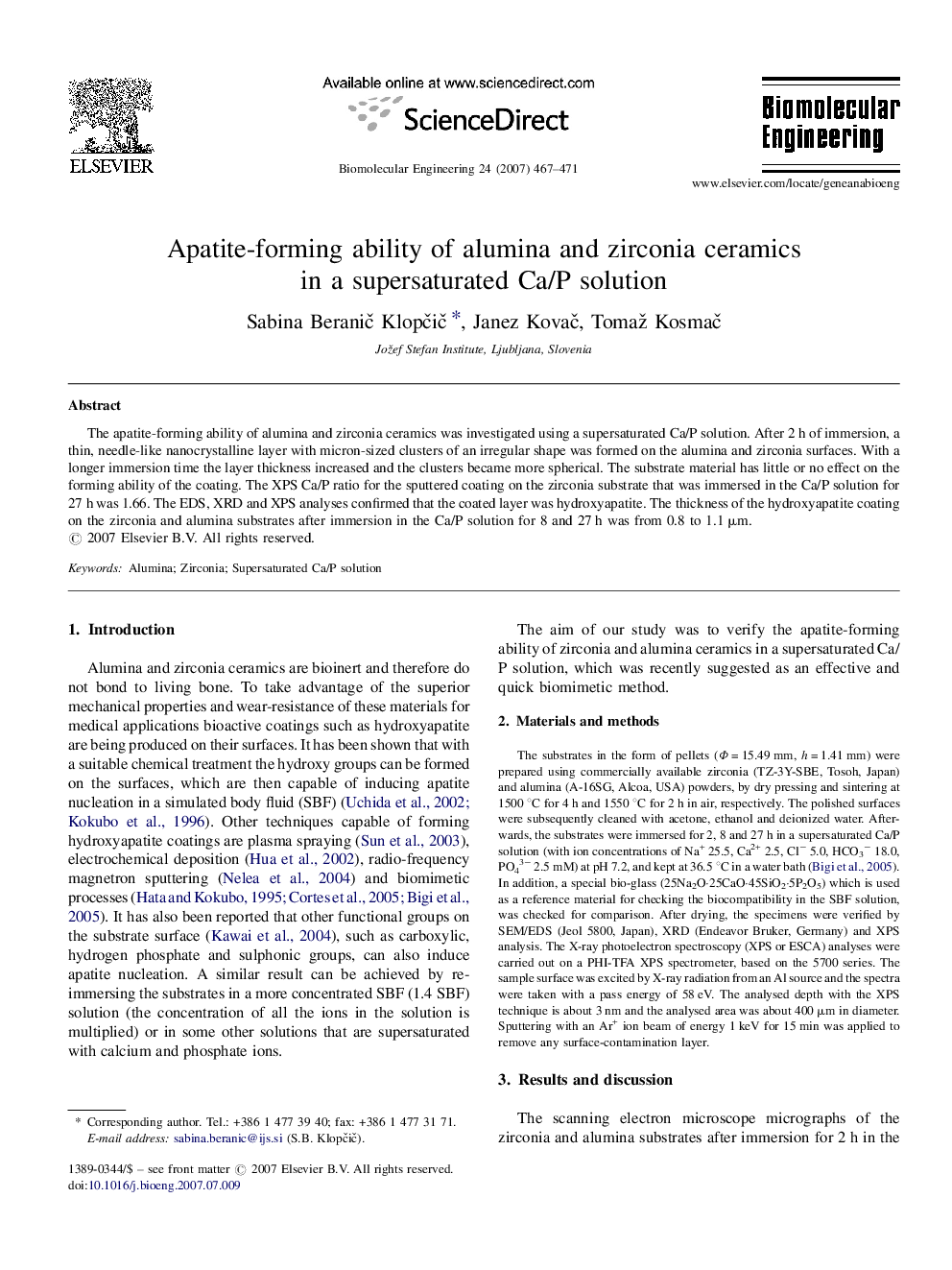| Article ID | Journal | Published Year | Pages | File Type |
|---|---|---|---|---|
| 14127 | Biomolecular Engineering | 2007 | 5 Pages |
The apatite-forming ability of alumina and zirconia ceramics was investigated using a supersaturated Ca/P solution. After 2 h of immersion, a thin, needle-like nanocrystalline layer with micron-sized clusters of an irregular shape was formed on the alumina and zirconia surfaces. With a longer immersion time the layer thickness increased and the clusters became more spherical. The substrate material has little or no effect on the forming ability of the coating. The XPS Ca/P ratio for the sputtered coating on the zirconia substrate that was immersed in the Ca/P solution for 27 h was 1.66. The EDS, XRD and XPS analyses confirmed that the coated layer was hydroxyapatite. The thickness of the hydroxyapatite coating on the zirconia and alumina substrates after immersion in the Ca/P solution for 8 and 27 h was from 0.8 to 1.1 μm.
